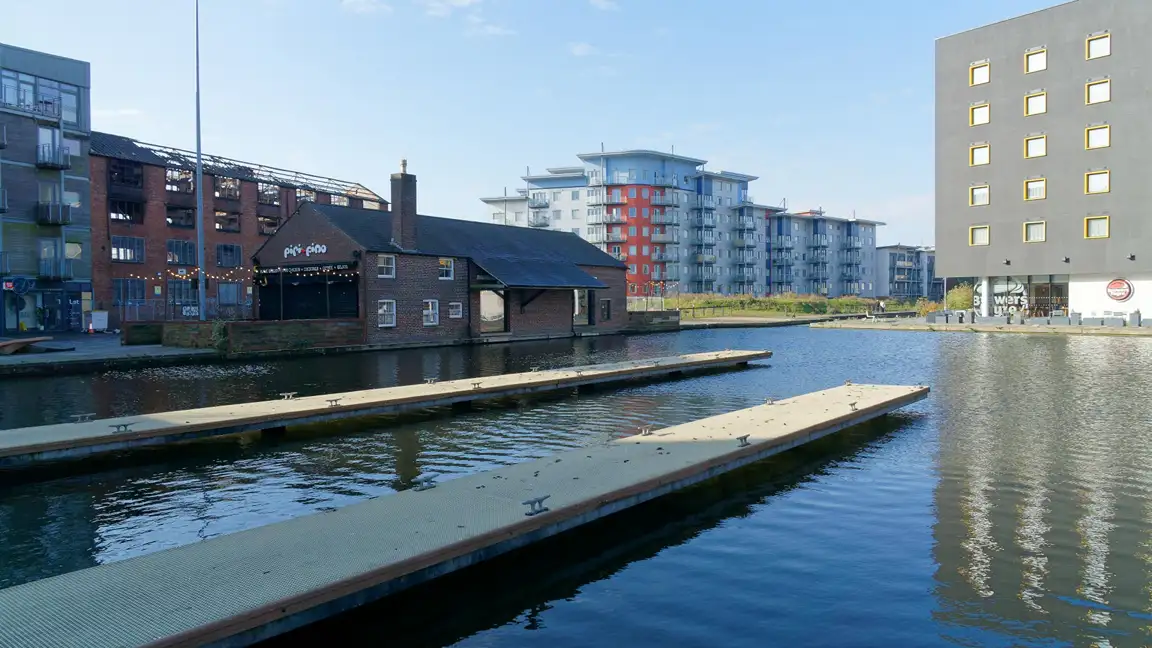Introduction
In August 2024, a major pollution incident struck the Walsall Canal, when around 4,000 liters of toxic substances, including highly hazardous sodium cyanide and zinc cyanide, leaked into the waterway. The spill had a devastating impact on the canal’s environment and forced an extended closure that has lasted for over eight months. While the towpath has since been reopened, the canal remains closed to boat traffic, and wildlife has been absent from the area. This marks a critical moment in the canal’s recovery, with dredging operations now underway to remove the cyanide-contaminated sediment from the canal bed.
Details of the Pollution Incident
The pollution incident in August 2024 was declared a major environmental disaster, as it introduced harmful levels of cyanide into the canal, threatening both the local ecosystem and public health. The toxic spill occurred when a substantial amount of sodium cyanide and zinc cyanide, known for their deadly effects, leaked into the water. The contamination posed immediate threats to the water quality, aquatic life, and surrounding environment.
In the wake of the incident, authorities responded quickly by closing off the affected section of the canal. Approximately one mile of the waterway in the Pleck area of Walsall was shut off to boat traffic, and wildlife that had once thrived in the area vanished. While the towpath has since been reopened for public access, the canal’s closure to boats has extended far beyond initial expectations due to the need for a thorough environmental recovery.
Canal Recovery Efforts
The Canal & River Trust, alongside the Environment Agency, has been leading the recovery efforts to restore the canal’s health and safety. A key step in this process is dredging, which involves the removal of cyanide-contaminated sediment from the canal bed. The toxic silt at the bottom of the canal is a significant barrier to recovery, as it contains the dangerous chemicals that continue to threaten both the waterway’s ecosystem and its ability to support recreational boat traffic.
The dredging operations are a critical part of the canal’s ecological recovery. The work aims to remove the pollutants that have settled at the bottom, clearing the way for a healthier environment. It is an ongoing process that requires careful management and monitoring to ensure the area is safe for both wildlife and human activities once the contamination is fully addressed.
Current Status of the Walsall Canal
As the dredging operations progress, the Walsall Canal remains closed to boat traffic. This extended closure has been necessary to prevent further exposure to the toxic substances in the water. While the towpath has been safely reopened to the public, the canal’s recovery from the cyanide contamination continues to take precedence. The lack of wildlife in the canal is another sign of the significant impact the pollution has had on the environment. However, efforts to restore the waterway are progressing, and future monitoring will help determine how long it will take for the canal to fully recover.
Environmental and Safety Measures
The Canal & River Trust and the Environment Agency are working together to ensure that every step in the recovery process is conducted with the utmost care. Once the dredging is completed, sediment and water samples will be rigorously tested to assess the remaining levels of contamination. These tests will help determine if further cleanup actions are needed and guide the next steps toward safely reopening the canal to boat traffic.
Safety remains a top priority throughout the process, and the authorities are committed to ensuring that the canal is free of harmful chemicals before any further use is allowed. Monitoring and testing will continue for the foreseeable future to ensure that the waterway meets safety standards and is ecologically stable.
What’s Next for Walsall Canal
The dredging operations are expected to take several more weeks, after which the water and sediment will be tested to confirm the extent of the recovery. The test results will help determine whether additional measures are needed to address any remaining contamination. Once the canal has been cleared of toxic substances and deemed safe, the closure to boats will be lifted, allowing for the return of recreational activities along the waterway.
Though the full recovery may take some time, the long-term environmental restoration of Walsall Canal is underway. The canal, which has been a vital part of the community and a scenic waterway for years, will soon be ready for reopening to boaters and wildlife alike. The ongoing recovery efforts are a testament to the dedication of those working to restore the canal and its surrounding ecosystem.
Conclusion
The ongoing dredging and recovery efforts in the Walsall Canal highlight the serious impact of pollution and the vital work needed to restore an affected waterway. While the canal remains closed to boat traffic, the steps being taken to remove toxic cyanide-contaminated sediment from the canal bed are a significant part of the recovery process. With continued monitoring, testing, and restoration work, the Walsall Canal is on its way to a safe and ecological recovery, with the hope of welcoming boats and wildlife back to the waterway in the near future.
